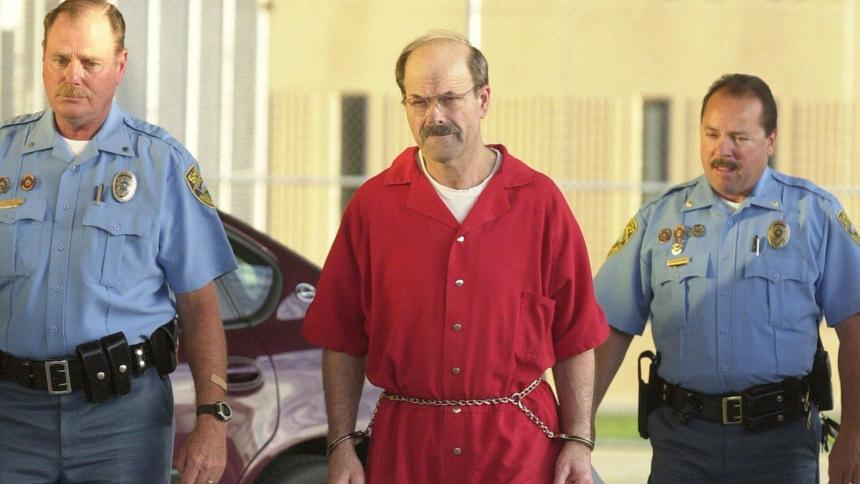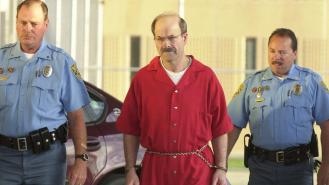
Do serial killers like BTK want to get caught?
'They all got caught except the Ripper, could I become a killer and not get caught?’
These words were written by Dennis Rader, aka BTK, who did indeed come very close to emulating Jack the Ripper and remaining an elusive bogeyman of his era. Fortunately, things worked out rather less auspiciously for the ‘Bind, Torture, Kill’ psychopath, who in August 2005 was handed 10 consecutive life sentences – belated justice for the families of those he had killed in Wichita, Kansas between the 1970s and early 90s.
While Rader may have pondered whether he could escape justice like Jack the Ripper before him, the almost wilfully foolish way he did eventually fall into the hands of police highlights a common question among true crime buffs: do serial killers, on some visceral level, actually want to get caught?
It sounds completely counterintuitive that any criminal would make it easier for law enforcement to catch up with them, but serial killers are not ordinary criminals. They are motivated not by material gain, not by personal grudges, and not by dire desperate circumstances, but by an inner maelstrom of sexual and narcissistic compulsions. This frequently spurs them to engage in highly risky and illogical actions, such as revisiting where they buried their victims’ bodies, maintaining very specific and identifiable MOs, and communicating directly with the press and the police. It can be reasonable to wonder, therefore, whether they do have a subconscious desire to be caught – perhaps because they actually want to be stopped from taking more lives, or – less charitably – because they desire the greater limelight of being unmasked.
How many people do I have to kill before I get a name in the paper or some national attention?
Certainly, Dennis Rader was addicted to his own notoriety. While active as a serial killer, he compiled cuttings of BTK news stories and sent out letters describing his addiction to murder. He created his own ‘brand’, coming up with the moniker BTK himself, and complained about the lack of public interest in what he was doing (‘How many people do I have to kill before I get a name in the paper or some national attention?’).
His self-obsession was in fact his undoing. After murdering his final victim in 1991, Rader resumed normal family life, and the BTK case looked set to go cold forever. It was only when Rader – hungry for attention – started sending letters again in the new millennium that detectives were given the break they were after. They were able to unmask him using metadata embedded within a floppy disk Rader sent to the media. Incredibly, Rader believed the police when they assured him it would be ‘safe’ to communicate via disk. Why? Because he genuinely thought there was some kind of mutual respect between him and the detectives, like he was some lofty Moriarty-like mastermind rather than a squalid thrill-killer of men, women and children.
In the words of Wichita cop Ken Landwehr, who headed up the BTK task force: ‘He couldn’t get over the fact that I would lie to him. He could not believe that I did not want this to go on forever.’
That’s the crucial takeaway here. Far from wanting to be caught, Rader was baffled and hurt by the police lying to him. As criminologist James Alan Fox has noted, ‘He felt invincible. Unstoppable. And that’s why many serial killers do communicate with the police. Not because they’re looking for capture.’
Indeed, an official report by the FBI firmly dismisses the ‘myth’ that these kinds of people want to be caught, saying: ‘As serial killers continue to offend without being captured, they can become empowered, feeling they will never be identified… It is not that serial killers want to get caught; they feel that they can’t get caught.’
In this light, a serial killer’s communications with the media and law enforcement can be simply regarded as another way the obsessive psychopath seeks to exert control over his own narrative and build his own mystique. And, if they are caught, it’s very much against their own wishes, and almost always down to one of three reasons: a simple, stupid mistake on the killer’s part, ingenious sleuthing, or pure happenstance.
n
Rader’s downfall falls into the category of simple, stupid mistake – believing the police about communicating by floppy disk. An example of ingenious sleuthing, meanwhile, was the caging of Joseph James DeAngelo Jr, aka the Golden State Killer, who like Rader had seemingly evaded justice after committing a string of rapes and murders in the 70s and 80s. He was eventually tracked down in 2018 when detectives ran his DNA data through an online genealogy service, which identified the killer’s relatives. Through a process of elimination, the detectives worked their way through the family tree to zero in on DeAngelo. And, as for the happenstance category, there are countless examples here – notablyTed Bundy and Peter Sutcliffe, who were both spotted by random police patrols after acting suspiciously in their vehicles.
If there’s one exception which proves the rule – ie, a serial killer who actually did exhibit genius-level intellect and who really did want to be caught – it’s probably Edmund Kemper. Equipped with an IQ of 145, he slaughtered numerous hitchhikers and his own mother before calmly handing himself to the police, saying that sheer ‘exhaustion’ and a sense of the ‘folly of the whole damn thing’ led him to call a halt to murder.
Kemper wanted release from the personal hell of his lethal compulsions. But most criminologists agree that the vast majority of serial killers have no such need for capture, and if they do seek to taunt the police – like BTK or the still-unidentified Zodiac Killer – it’s part of the same narcissistic game that leads them to claim lives with amoral abandon.







